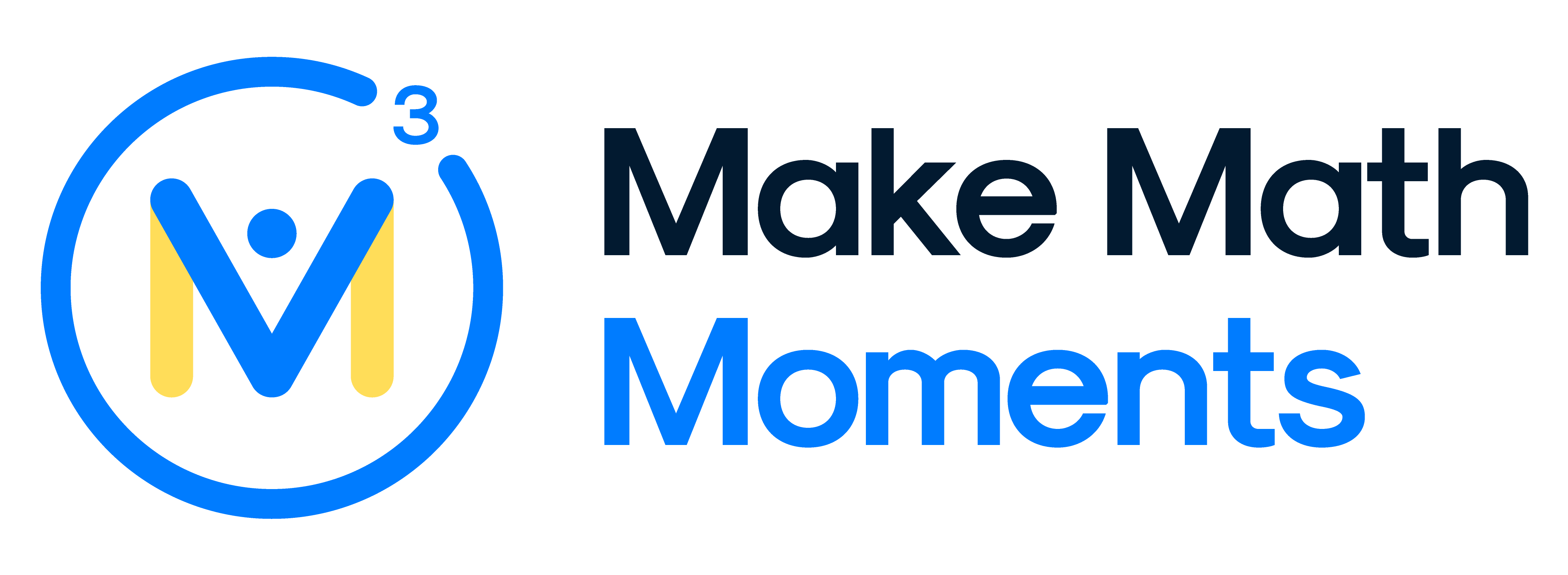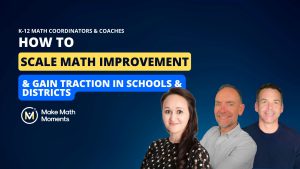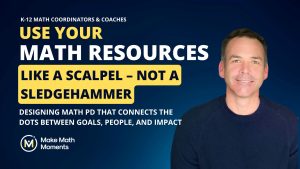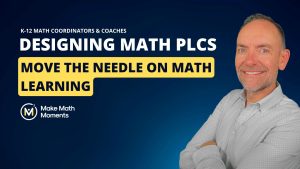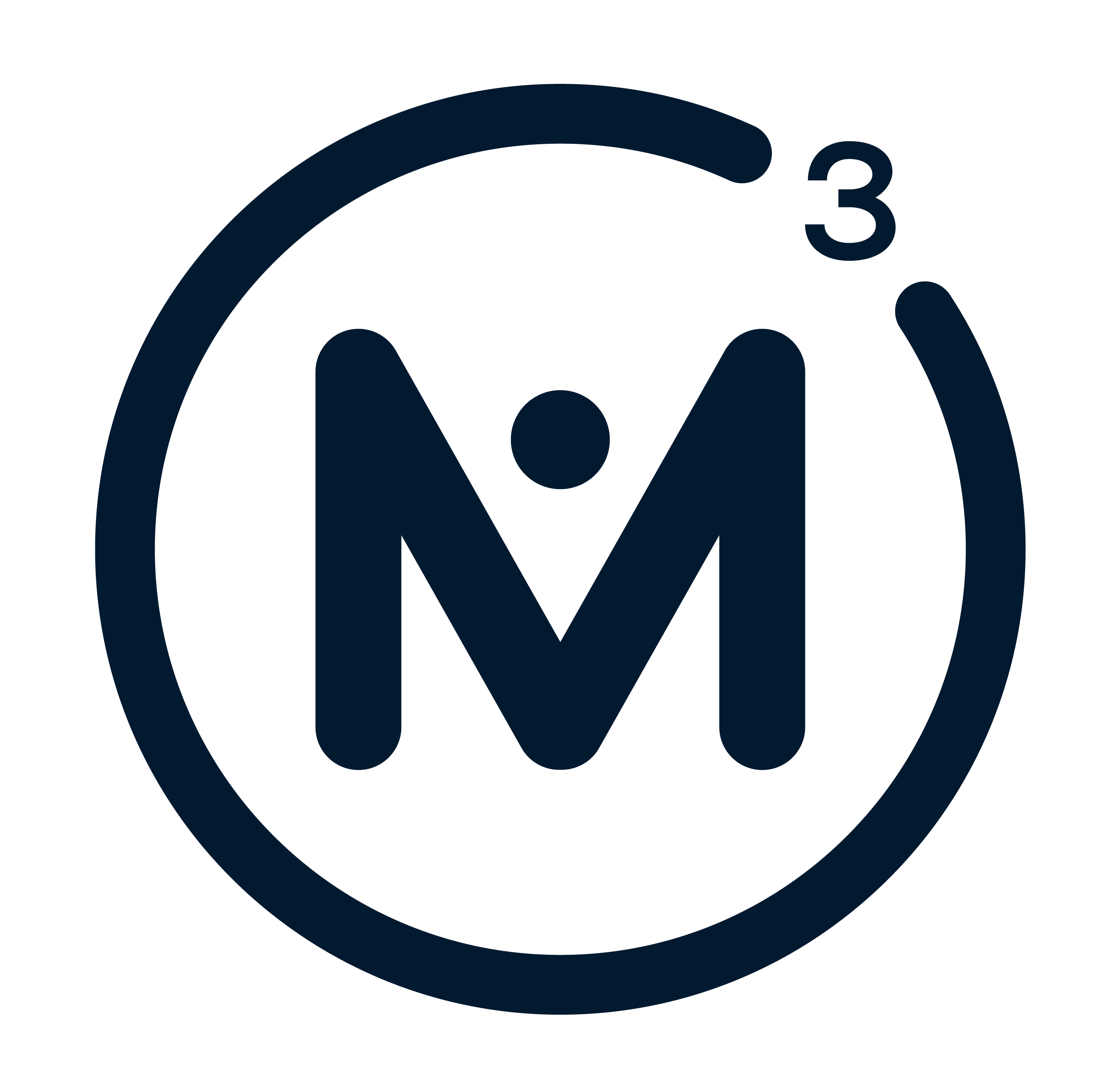The biggest threat to lasting math improvement isn’t lack of effort or even lack of vision—it’s fragility. Too many districts have watched years of progress unravel the moment a key leader, coach, or champion moves on.
When improvement lives only in the head of a single coordinator or in the charisma of a few coaches, it disappears as soon as they do. Initiatives stall. Teachers feel like they’re starting over. Momentum dies.
That’s the problem: personality-driven systems don’t survive leadership transitions.
If sustainability is the hallmark of great systems, codification is the tool that makes it possible.
Every district that manages to sustain math improvement through leadership transitions shares one essential trait: they’ve moved beyond personality-driven initiatives.
The work no longer lives in a single champion’s head or in the charisma of one coach. Instead, it’s embedded in structures, tools, and shared language that keep the improvement flywheel turning—Identify, Design, Measure → Align and Optimize PD Structures → Build Capacity of Teachers → Ignite Growth & Leadership.
This flywheel represents more than a sequence of steps; it’s a way of thinking about continuous improvement. When leaders codify their work—capturing effective processes, naming them, and embedding them into everyday routines—they transform improvement from an event into a system.
From Heroic Leadership to Systemic Leadership
In the mid-2000s, Ontario’s Ministry of Education faced a familiar problem. The province had invested heavily in math and literacy improvement, but the results were inconsistent.
Progress surged in pockets—often where an exceptional principal or instructional coach was leading the charge—but momentum vanished when those leaders moved on.
The Ministry realized that it couldn’t rely on heroes.
Their response was to professionalize improvement by codifying what worked. They launched the Capacity Building Series, a collection of concise monographs that distilled effective teaching and leadership practices into accessible, sharable tools. These were complemented by the School Effectiveness Framework and a set of “look-fors” that defined what good instruction looked and sounded like in Ontario classrooms.
Suddenly, there was a shared language. Principals, coaches, and teachers could describe and observe high-quality math instruction using the same terms and criteria. It was no longer about one leader’s vision—it was about a collective understanding, accessible to all. As Michael Fullan and Andy Hargreaves later wrote, Ontario had found a way to embed professional knowledge into the fabric of the system, ensuring that improvement survived turnover.
Making Practice Visible
Jefferson County Public Schools in Colorado learned a similar lesson through its Math Councils. Initially, the district’s success stories were scattered—teachers and schools that had cracked the code on rich problem-solving or discourse-driven classrooms. The challenge was making those “bright spots” visible and transferable.
The district began to codify these practices in a concrete way: short videos of teachers in action, annotated student work samples, and teacher commentary explaining instructional moves. These lived in a shared digital portal, accessible to every educator in the district.
This wasn’t about standardizing teachers—it was about preserving and spreading effective practice. When a strong teacher or coach left, their expertise didn’t leave with them. It remained visible, documented, and ready to guide others. As Atul Gawande has noted in his work on checklists, “good checklists are not recipes—they are reminders of the most important steps.” Jefferson County’s artifacts functioned the same way: they turned tacit knowledge into portable wisdom.
Creating Protocols that Outlast People
When two district math leaders in Katy Independent School District examined their professional learning model, they realized their biggest barrier was continuity. Each summer they ran impressive workshops, yet by October, the energy had faded. Teachers were trying to remember what had been modelled, but without a structure to anchor it, the learning evaporated.
So, they codified the process. Together with principals and coaches, they developed year-long PLC protocols for unpacking standards, analyzing student work, and setting learning goals. These weren’t optional templates—they became the rhythm of professional collaboration across the district.
When turnover inevitably came—new coaches, new teachers, even new administrators—the process stayed intact. The PLC protocol had become part of Katy ISD’s identity. Math collaboration wasn’t dependent on who was leading the conversation but on a clearly defined way of working.
Anchoring Observation in Shared Process
Chicago Public Schools faced a different challenge: how to ensure consistent instructional quality across a system of more than 600 schools. They borrowed an idea from medicine—Instructional Rounds.
In rounds, teams of principals and coaches use a common protocol to observe classrooms, gather non-evaluative evidence, and look for patterns across the system. The focus is collective inquiry, not judgment.
This process turned reflection into a system, not a personality. Even as school and network leaders rotated, the rounds continued, preserving coherence and focus. The practice didn’t rely on one observer’s insight but on a shared way of seeing.
Systems That Outlive Staff
In New Visions for Public Schools, a network of schools in New York City, codification took the form of tools. Teachers and leaders co-designed curriculum maps and aligned assessment systems that were centrally housed and accessible to everyone.
When a principal or department head left, the system remained. New staff inherited not just materials, but a coherent vision of teaching and learning. The curriculum maps and assessment protocols became the connective tissue that tied together dozens of schools and hundreds of educators.
Embedding Continuity in Coaching Systems
The Huron-Perth Catholic District School Board (Ontario) offers a vivid example of codification in action. When the district restructured its math coaching system, leaders realized that improvement efforts often depended too heavily on individual coaches’ skills and relationships.
So, they developed a set of shared tools: progress-monitoring templates, coaching look-for documents, and district-wide PD alignment plans. Every school’s coaching cycles, PLC work, and professional learning sessions linked back to the same objectives.
This codification meant that even as coaches changed roles or schools, the district’s improvement work didn’t skip a beat. The structures remained, guiding new coaches and principals in continuing the same coherent work.
Building the Flywheel
Across these districts—from Ontario to Colorado, Texas to Chicago, New York to Huron-Perth—a pattern emerges. Sustainable improvement doesn’t depend on perpetual motion from a few dedicated leaders.
It depends on the flywheel effect—a set of interconnected processes that keep turning because each piece reinforces the next.
- Identify, Design, Measure: Collectively clarify what matters most and define how success will be recognized. Your vision, objectives, and key results.
- Align and Optimize PD Structures: Build professional learning systems that consistently reflect those priorities.
- Build Capacity: Equip teachers and leaders to take ownership of the vision.
- Ignite Growth – Great Leaders Create Leaders: Codify the work so that leadership becomes distributed, not concentrated.
When this flywheel is built and documented, it can withstand turnover. A new coordinator doesn’t have to guess how to lead the work—they inherit a map, a rhythm, and a set of tools. The district’s identity becomes stronger than any single leader’s style.
So imagine, instead of just following the flywheel for yourself and your team to create improvement in math this year, you also build a Flywheel Operating System—a way to codify how your district approaches improvement, so the process itself becomes part of your culture.
Your Flywheel Operating System becomes a living manual for how we do the work around here. It’s not a binder on a shelf; it’s a shared understanding that lives in your teams, your PD structures, and your coaching conversations.
Your Flywheel Operating System
How We Identify, Design, and Measure
This is where we clarify what matters most. We articulate our district’s math vision, our objectives, and the key results that help us recognize progress. We define what “good” looks like in math teaching and learning, not as an abstract ideal but through co-created examples, rubrics, and student evidence.
How We Align and Optimize Professional Learning
This is how we ensure our time and resources are used with intention. Our PD calendar, PLC agendas, and coaching cycles are all organized around the same goals. We embed reflection points throughout the year to measure progress against our key results. Everyone knows how professional learning connects to the larger vision.
How We Build Capacity
This is how we grow our people. We design supports that move teachers from awareness to autonomy—protocols for unpacking standards, analyzing tasks, and planning instruction. We make these processes visible so that teachers can lead them, not just attend them. Our goal isn’t to make teachers dependent on support; it’s to help them become leaders in the work.
How We Ignite Growth
This is how we ensure the flywheel keeps turning even when we’re gone. We document our practices—our PLC protocols, our observation look-fors, our progress-monitoring tools—so that leadership becomes distributed and we co-elevate each other. When new people join, they don’t need to start from scratch; they step into a system that already knows how to learn, grow, and improve.
Codifying the flywheel in this way transforms it from a tool you use into a system that sustains itself. It’s how you move from doing improvement to being an improving organization.
Over time, this Flywheel Operating System becomes part of your district’s DNA. It’s how you ensure that great leadership doesn’t end with a transition—it multiplies through the people and processes you leave behind.
The Legacy of Codification
Codifying the work isn’t about bureaucracy—it’s about legacy. It’s the act of turning individual learning into collective capacity. When you create frameworks, document protocols, and make your processes transparent, you’re not just leading improvement—you’re ensuring that the work will outlive you.
Great leaders don’t just create results; they create systems where others can thrive. They codify the work so that when they step away, the flywheel keeps spinning.
For Leaders Facing the Same Challenge
If your district’s math progress feels tied to one person’s shoulders, you’re not alone. Many improvement efforts stall the moment a key leader moves on.
The good news?
There’s a better way.
Need support building your district’s math leadership pipeline? We’re here to help. Explore our support programs.
